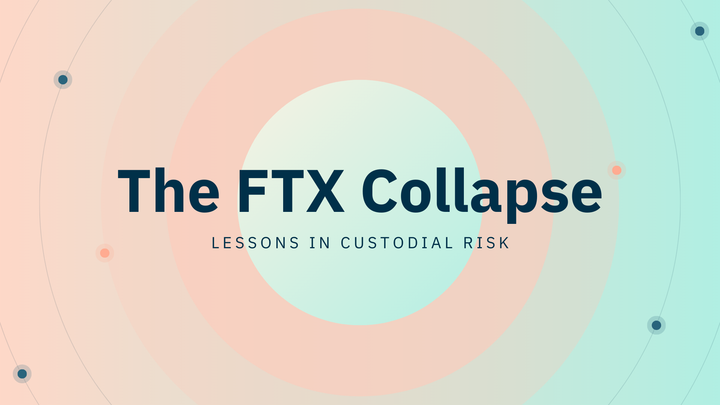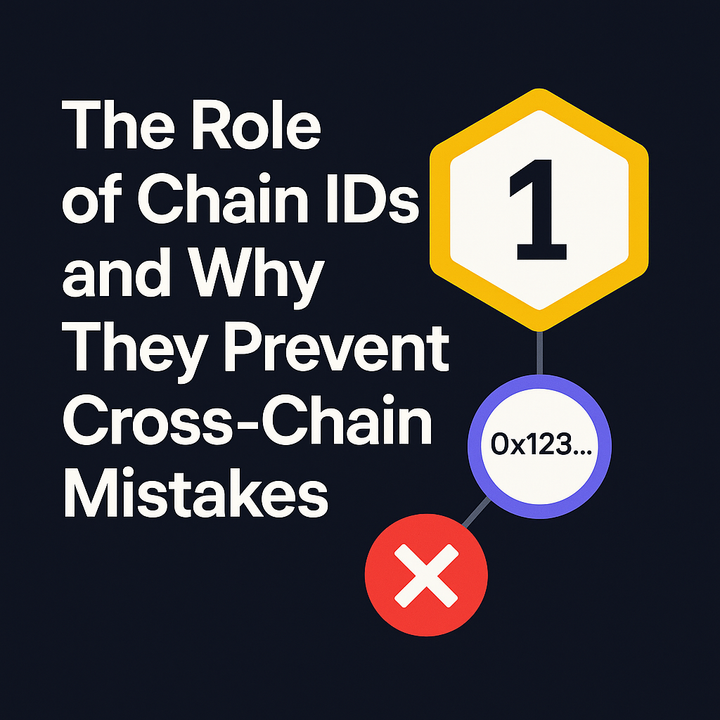The Bitcoin Standard: Universal Digital Inc.'s Treasury Strategy and the Reorganization of Global Capital
The tectonic plates of global finance are shifting. For decades, corporate treasuries have operated within predictable, traditional frameworks, prioritizing stability and conventional returns. But what happens when a digital asset, once dismissed as speculative, begins to rewrite the rules of capital allocation? What if the very act of holding Bitcoin becomes a strategic imperative, not just for tech startups, but for established public companies across continents? Universal Digital Inc.'s bold move to embrace a Bitcoin treasury strategy signals a profound transformation, one that challenges old paradigms and ushers in a new era of corporate finance, mirroring a fundamental re-organization of capital itself.
The Bitcoin Standard: A New Era for Corporate Treasuries
Universal Digital Inc. has announced a groundbreaking(https://www.nasdaq.com/articles/canadian-company-universal-digital-launches-bitcoin-treasury-strategy), positioning the cryptocurrency as a core pillar of its capital allocation framework. This isn't merely an investment; it's a deliberate shift in how the company manages its balance sheet, aiming to enhance long-term net asset value and align with evolving global financial trends. As an initial step, Universal Digital has commenced the orderly divestment of its existing altcoin holdings, with the proceeds to be reallocated toward Bitcoin accumulation under a new reserve model. This strategic pivot underscores a growing institutional confidence in Bitcoin, moving it from the fringes of speculative assets to a recognized strategic reserve asset. But what drives this audacious move, and how does it reflect a broader shift in corporate thinking across the globe? This strategic pivot isn't isolated; it echoes a successful model that has already reshaped corporate balance sheets.
The MicroStrategy Blueprint: Paving the Way
Universal Digital's strategy is a clear echo of the "MicroStrategy 2.0" model, pioneered by Michael Saylor's software company, now rebranded as Strategy. Since 2020, Strategy has famously amassed over(https://www.strategysoftware.com/world25/bitcoin-for-corporations), becoming the largest corporate holder of Bitcoin globally. This aggressive accumulation has seen Strategy's stock surge over 3,000% since 2020, as Bitcoin's price has skyrocketed to new all-time highs above $110,000 in 2025. The success of this model has inspired a wave of "Strategy copycats," with 61 publicly-listed companies not primarily engaged in digital assets adopting Bitcoin treasury strategies. These firms are allocating a portion of their cash and reserves toward the world's largest cryptocurrency, collectively holding just under 100,000 Bitcoin. This trend is driven by a desire to replicate Strategy's success, leveraging access to credit markets for further Bitcoin acquisitions, and attracting attention and potentially higher valuations from investors who are increasingly rewarding companies that embrace digital assets. This shift from traditional cash reserves to Bitcoin reflects a growing belief in Bitcoin's role as a long-term treasury asset. This widespread adoption isn't happening in a vacuum; it's driven by powerful external forces that are reshaping the global financial landscape.
Why Now? Macroeconomic and Regulatory Tailwinds
The timing of this corporate Bitcoin adoption is no coincidence. Several powerful macroeconomic and regulatory tailwinds are converging in 2025, making Bitcoin an increasingly attractive asset for corporate treasuries. Globally, debt levels have exceeded $307 trillion in 2023, raising concerns about potential currency devaluation and inflation. In this environment, Bitcoin is emerging as a crucial hedge against inflation and geopolitical instability, offering a politically neutral store of value outside traditional monetary blocs. This is particularly appealing in regions characterized by fragile fiat currency systems, where companies like Argentina's Belo have allocated up to 30% of their treasury holdings to Bitcoin to counteract high inflation rates. This economic imperative is further bolstered by a changing political landscape, creating a more permissive environment for digital assets.
A Shifting Regulatory Tide: Trump's Crypto Embrace
The Trump administration's pivot towards a more crypto-friendly stance has significantly softened the regulatory environment in the U.S. President Trump signed an executive order in March 2025 to establish a(https://thedefiant.io/news/press-releases/universal-digital-inc-announces-bitcoin-treasury-strategy-across-north-america-and-asia) and has actively hosted industry leaders at the White House. These moves have boosted the price of Bitcoin and other cryptocurrencies, creating a more permissive environment for digital innovation. His administration has also taken steps to dissolve the National Cryptocurrency Enforcement Team (NCET) within the Department of Justice, signaling a deliberate move away from a "heavy-handed enforcement approach" towards a more market-friendly oversight model. This confluence of economic necessity and supportive policy is accelerating corporate interest, leading us to examine how Universal Digital is specifically navigating this evolving landscape.
Universal Digital's Strategic Pivot: Divesting for Digital Gold
Universal Digital Inc.'s decision to divest its existing altcoin holdings marks a calculated and strategic pivot towards a Bitcoin-centric reserve model. This move reflects a growing understanding that while altcoins may offer speculative opportunities, Bitcoin stands alone as the most robust and decentralized digital asset for long-term treasury purposes. The proceeds from these altcoin sales will be systematically reallocated to Bitcoin, reinforcing the company's balance sheet strength. This strategy is designed to enhance Universal Digital's long-term net asset value and align it with the broader global trend of institutional digital asset adoption. By focusing solely on Bitcoin, Universal Digital aims to mitigate the higher volatility and regulatory uncertainties often associated with a broader altcoin portfolio, positioning itself as a more stable and credible player in the digital asset space. This focused approach sets the stage for their ambitious expansion into key global markets.
The Asian Frontier: A Strategic Expansion
Universal Digital's Bitcoin treasury strategy extends beyond North America, with a keen focus on Asia's burgeoning digital asset market. The company plans to collaborate with publicly-listed companies across Asia to implement Bitcoin treasury models, leveraging the region's growing institutional and retail interest in digital assets. Eastern Asia, encompassing markets like Japan, South Korea, and Hong Kong, accounted for approximately 8.9% of global on-chain cryptocurrency transaction volume between July 2023 and June 2024, with a significant portion of this activity driven by institutional and professional investors. This regional focus is critical, as Asian markets are increasingly open to blockchain-based financial innovation. Universal Digital aims to tap into this vast potential, recognizing that the future of corporate Bitcoin adoption is inherently global. This strategic expansion into Asia is further solidified by a pivotal partnership, which will be instrumental in navigating the complexities of regional markets.
The GFA Co. Partnership: A Gateway to Japan
In a significant move to solidify its Asian expansion, Universal Digital entered into a non-binding Memorandum of Understanding (MOU) with GFA Co., Ltd., a Tokyo Stock Exchange-listed diversified financial and technology group. This MOU establishes a partnership framework for jointly advancing(https://www.ainvest.com/news/universal-digital-launches-bitcoin-treasury-strategy-partners-gfa-japan-2506/) in Japan. Under this agreement, the companies will explore introducing Bitcoin reserve models to Japanese listed companies, structuring capital raising tools such as warrants and market-based offerings to fund Bitcoin acquisitions, and enhancing governance, investor relations, and custody frameworks for digital assets. The collaboration also sets the stage for broader engagement in Japan's digital economy, including joint investments in public companies and the development of blockchain-based corporate structures. This partnership is crucial for Universal Digital, as GFA Co.'s expertise in Japanese markets provides a vital gateway to a region with immense potential for Bitcoin adoption. This strategic alliance highlights a fundamental shift in how capital is being organized and managed globally.
Re-organizing Capital: A New Financial Architecture
The emergence of corporate Bitcoin treasury strategies, exemplified by Universal Digital's move, represents a dynamic process of capital re-organization. This shift is moving from a fragmented, traditional financial landscape to a more unified, digitally-native reserve model. Historically, corporate capital has been "fragmented" across various traditional assets and jurisdictions, often subject to the inefficiencies of legacy systems. The adoption of Bitcoin as a treasury asset signifies a "division" from these old methods, leading to the "birth" of new, digitally-centric capital pools. These new pools, while initially distinct, are ultimately aimed at achieving a more [capital-efficient paradigm] and [cross-chain interoperability] across the global financial ecosystem. These strategies aim for the efficient and secure allocation of capital in a rapidly evolving digital world. This re-organization of capital has direct implications for market dynamics, particularly for Bitcoin's price.
Impact on Regional Bitcoin Price Dynamics: Supply Shock and Demand Surge
The increasing adoption of Bitcoin treasury strategies by corporations like Universal Digital is poised to have a significant impact on regional and global Bitcoin price dynamics. With Bitcoin's total supply permanently capped at 21 million BTC, even modest accumulation by a few nations or a growing number of corporations could lead to a supply shock, reducing circulating availability. Standard Chartered estimates that "Strategy copycats" have already doubled their Bitcoin holdings in the last two months to collectively hold just under 100,000 Bitcoin. This growing corporate demand, coupled with the U.S. establishment of a(https://thedefiant.io/news/press-releases/universal-digital-inc-announces-bitcoin-treasury-strategy-across-north-america-and-asia) (SBR) in March 2025, is anchoring supply and strengthening institutional confidence. Each dollar of capital deployed into Bitcoin can increase the total Bitcoin market cap by up to $25 in the short term, highlighting the reflexive power of institutional inflows. This concentrated demand from corporate treasuries and sovereign entities is likely to exert upward pressure on Bitcoin's price, particularly in regions where adoption is accelerating. However, this bullish outlook is not without its inherent risks.
The Risks and Rewards: A Balanced Perspective
While the allure of Bitcoin as a treasury asset is strong, integrating it into corporate balance sheets is not without its challenges and risks. Bitcoin's inherent [volatility] remains a primary concern; its value derives from scarcity and market adoption, resulting in significantly higher price fluctuations compared to traditional treasury assets like government bonds. A sharp drop in Bitcoin's price could lead to liquidity crises for companies with significant holdings, potentially putting half of their Bitcoin treasuries underwater if the price falls below $90,000. Regulatory hurdles, complexities of managing digital assets, and security concerns also necessitate a cautious approach. However, proponents argue that the long-term potential for diversification and increased liquidity outweighs these risks, especially in a world grappling with macroeconomic instability. The key for corporations lies in carefully assessing their risk tolerance and aligning Bitcoin adoption with their broader financial objectives. This delicate balance between risk and reward is shaping the broader implications for Web3.
Beyond the Balance Sheet: Broader Implications for Web3
The corporate adoption of Bitcoin treasury strategies extends far beyond individual balance sheets; it has profound implications for the entire Web3 ecosystem. This trend is accelerating the formation of a "[new monetary stack]," where digital assets will sit alongside sovereign debt in institutional portfolios, and transparent, composable financial instruments become baseline infrastructure for treasuries and funds. Companies like Coinbase are already building a "modern financial stack" for businesses, enabling effortless crypto payments and automated financial workflows. This integration of Bitcoin into traditional corporate finance legitimizes the broader digital asset space, paving the way for wider adoption of [programmable money] and decentralized finance (DeFi) solutions. The increasing entanglement of crypto with broader financial systems can lead to [systemic benefits], but also highlights the need for robust safeguards to prevent potential volatility from impacting long-term savings and retirement systems. This ongoing evolution demands continuous vigilance and adaptive regulatory responses.
The Evolving Landscape: A Continuous Transformation
The journey of corporate finance, particularly concerning digital assets, is one of continuous transformation. Events like Universal Digital's strategic pivot and the broader adoption of Bitcoin treasury strategies are not isolated incidents but part of an ongoing evolution. This process involves constant adaptation and re-organization of financial structures. The market is developing more [robust mechanisms] to handle external pressures, moving towards [greater transparency] and reduced susceptibility to individual whims or unbacked speculation. The recurring theme of [market volatility due to external shocks] suggests an "evolutionary pressure" on the crypto ecosystem, pushing it towards greater resilience. This indicates that while individual events cause disruption, they also contribute to the [long-term maturation of the crypto market]. The financial landscape is learning to adapt and build [immunity to certain types of shocks], potentially leading to a more [stable and integrated financial future].
Conclusion: Charting the Future of Corporate Finance
Universal Digital Inc.'s announcement of its Bitcoin treasury strategy marks a watershed moment in the ongoing integration of digital assets into mainstream corporate finance. By divesting altcoins and committing to Bitcoin accumulation, Universal Digital is embracing a model pioneered by MicroStrategy, signaling a profound shift in how companies manage their capital in 2025. This move is driven by a confluence of macroeconomic pressures, a more crypto-friendly regulatory environment, and the undeniable success of early corporate Bitcoin adopters.
The partnership with Japan's GFA Co. further underscores the global nature of this transformation, opening doors to Asia's vast public markets and demonstrating a commitment to building robust, Bitcoin-based corporate finance models. This evolution reflects a vision of unifying fragmented capital, moving from disjointed traditional approaches to a more integrated and efficient digital financial ecosystem.
While the potential impact on regional Bitcoin price dynamics, driven by increased institutional demand and a capped supply, is significant, the inherent volatility and regulatory complexities necessitate a balanced perspective. Ultimately, Universal Digital's strategy is a testament to the ongoing maturation of the crypto market and its deepening entanglement with traditional finance. This continuous transformation demands a nuanced understanding of both technological advancements and the human elements that continue to shape the future of global finance.
Refer To:
🔗Links:



Comments ()